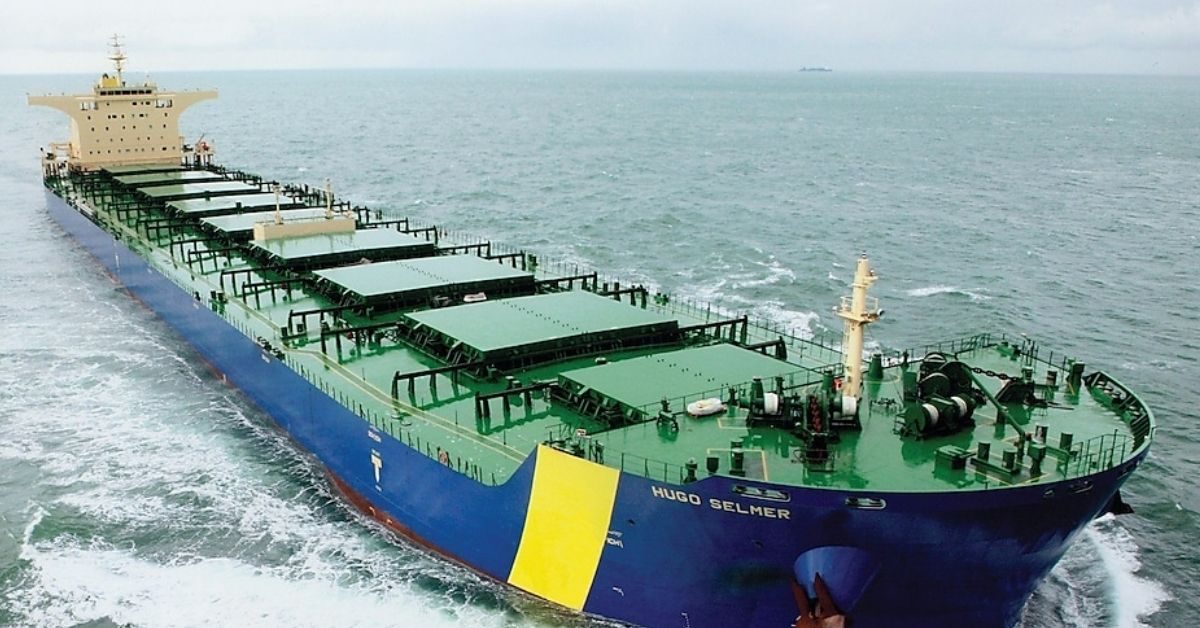DSV Panalpina is working on an improved digital platform that will help enable customers to choose more climate-friendly routes and to pay extra for green fuel. A growing demand has created momentum, says DSV Panalpina chief.
Customers are starting to really embrace green solutions, and DSV Panalpina is therefore working on a new and improved platform that will enable customers to choose more sustainable freight solutions.
The platform is currently being tested internally, but DSV Panalpina’s EVP of group compliance, Martin Andreasen, expects that the platform could reach the market during the second quarter.
The goal is to give customers a better overview of each route’s emissions, so that they can on this basis choose greener planes, ships and trucks. The platform will also enable them to pay to use green fuel, which can be tanked on a transport vessel in DSV’s fleet.
“The entire foundation for making a decision about how to optimize the chain is to know your footprint, and we’ve been working on that throughout 2020. You know it from the travel portal Momondo, which is the first step of choosing a flight, and where for some flights you can see how much they emit and perhaps even tick a box to choose to compensate for emissions,” says Andreasen in an interview with ShippingWatch.
The transport group recently published its corporate responsibility report, and here the company unveils some details about the things being worked on as part of the new initiative, under the name green logistics.
The report highlights an unnamed major customer, who will be able to choose a shipping company, specific means of transport and, not least, choice of fuel. Several of these elements are already possible for major customers, but the green aspect will play a bigger role going forward, says the company.
“We should be careful in terms of saying that in 2021 you can log in, and all of this will be possible. What we’re doing with this customers represents some of the first steps in this direction, in which we want to move. We’re looking at the routes to see which fuels we can use, and which consequences there are,” says Andreasen, adding that this selection always happens in cooperation with DSV, as it would otherwise be a comprehensive and complicated task for the customer.
He speaks of a more general “scenario analysis” that combines a large customer’s many transports under one umbrella and offers numbers for the combined emission reduction.
Investing in people and IT
DSV Panalpina is far from the only one working on platforms aimed at providing a better overview of green transport choices.
Competitor Kuehne + Nagel has already launched Seaexplorer, which allows customers to pick specific routes and to pay extra for sustainable fuels or more traditional offsetting, which involves compensating for emissions by supporting forestation projects.
Offsetting is a divisive issue, as it is being criticized for merely moving the problem around. According to Andreasen, offsetting is thus just the last lever being pulled at DSV.
“It can be divisive, as it seems like one is riding a green wave, but this has been achieved by planting trees, and then one can just do what one wants, as long as one keeps planting more trees. If we’re only offsetting, we won’t reach the target. We want to work with the actual problem,” says Andreasen.
This requires investments, and the logistics companies also encounter criticism here sometimes, as they do not own their fleet. As such, suppliers have to buy new and sustainable equipment.
“We’re not just buying new trucks, but we’re primarily investing in resources, people and IT infrastructure. If we can’t do product development on these things, then we have nothing to offer our customers,” he says.
“Some customers are willing to pay extra for it, some feel we need to pay the costs, and others say we should split it. We’re seeing all of it,” says Andreasen.
Momentum has changed
The challenge has for a long time been that demand has failed to emerge, even though the agenda has been moving in a more environmental direction. This is now changing, and there is a different momentum today, says Andreasen.
“We can feel that there is a growing demand, especially from our major customers,” he says, comparing to the situation just a few years ago.
He declines to name specific numbers, but he explains that the development has been entirely necessary in order to boost development of the green products, which are now reaching the market.
“The challenge in the sector has been that even if you want something green, you can’t just walk down to aisle two and choose the product. We need to create it, and of course this requires demand, because if there’s no customer asking for it, it becomes difficult to push the suppliers in this direction,” he says.
Source: Shipping Watch








